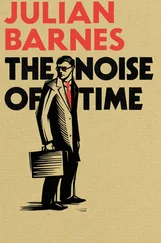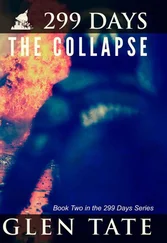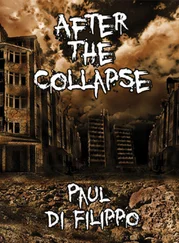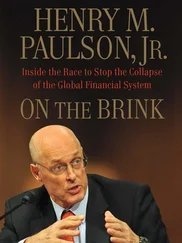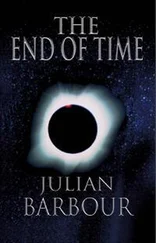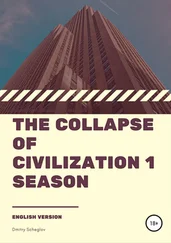Alan said, “How much time do you need?”
“If Ross, Ellen, and I can’t come up with the outline of a plan by the end of tomorrow, it won’t work. Is tomorrow evening okay with you?”
The audience was sullen, arms crossed, scowls evident. Candale said, “Look, people, this decision we have to make is one that will define our community and, regardless of which way we go, could wreck it. Ivan is asking for one day. If he has a suggestion, I think it’s worth hearing him out.”
Jerry said, “Tell you what. Today is Tuesday. I’m willing to give you all day tomorrow. I’ll meet with you Thursday morning, and we schedule a community meeting for that evening. That’s when we make a final decision. Is that okay with you, Alan?”
Alan nodded. “Fine with me.”
Candale said, “Agreed. We’ll give the two of you a briefing Thursday morning, you can each meet with your people in the day, and we convene on Thursday evening.”
37
SCHEME FOR DEVASTATION
Twelve men and women dressed in business casual sat around a mahogany conference table overlooking San Francisco Bay from Oakland. The man at the head of the table said, “Tim, update us on the Canada project.”
“Happy to. As you know, we stopped the building of a pipeline in Canada that would have carried oil to the coast. The lessons we learned are invaluable going forward. Before we developed this strategy, I have to admit it seemed as if we were fighting a losing battle. But once we put the strategy in place, we could see progress. When the pipeline was cancelled, we realized we were on the cusp of something phenomenal, something that will help us put an end to the scourge of industry.”
One of the people said, “Isn’t that overstating it? Sure, stopping the pipeline was a great victory, but let’s not get carried away and think we’ve won the war.”
Tim said, “Stopping the pipeline was a victory, but that’s not the important thing. The important thing was how we did it and the tactics we learned.”
“What tactics? I don’t see any difference between this and other protests. Including some that didn’t work.”
The chairman said, “But there is a difference. A huge one. Before, we were following the playbook. Get people riled up, arrange protests, feed slanted stories to the media. But Tim here came up with something we call the hive strategy. That’s the one we tested and refined on the pipeline project. It worked, but it needed a major revision. We’ve now finished and we’re deploying it on the Canada project. Tim, tell us how it works.”
“We’re proud of this. The hive strategy has two components. The most visible one is what we call the swarm. This is the mass of protestors who take to the streets demonstrating against whatever we want them to demonstrate against, be it pipelines, mines, or railways. The other component, the hive, acts as the organizer, setting up rallies, planning social media campaigns, and above all, providing funding to local groups that can be useful.”
A participant said, “I don’t get it. How does that differ from what we were doing before?”
“From the outside, it doesn’t. All the public sees are protests either way. The value of the strategy is how it organizes the swarm, how we turn a bunch of eager enthusiasts into a managed organization. For example, we blocked access to a provincial legislature, which meant we had to identify all the entrances and assign protestors to cover each one. That sounds humdrum, but it’s a focus on details, which is what successful organizations do.”
Someone else said, “You mentioned local groups. Do you mean environmental organizations?”
“Yes, they are our primary recipients of aid and organizational skills, but we also find disgruntled natives and promote them in their communities. We’ve been able to give them dirt on their existing leadership and even recruit armed supporters to intimidate the others. With this strategy, we’ve been able to get many of them elected.”
“The dirt we dig up. Is it real or did we make it up?”
“Does it matter? Oh, we’ve also had success in organizations like church groups or even some service clubs where we can find activists.”
“A few activists or disgruntled natives? Is that enough to subvert an entire organization?”
“Usually it is. Most organizations consist of a handful of active members with the rest just followers. If we can recruit the activists, the other members will either follow or drop off. They won’t challenge the direction we want them to take. After all, look at the news. You only see demonstrations against projects. Never for, even if most people favour them. People who support development don’t hit the streets. Our people do.”
“You figure subverting a few activists gets the organizations moving in the direction we want?”
“Yes. We provide the expertise and throw in some appearances by a few movie stars or other celebrities who know nothing about the issues but who look and sound great, and the swarm will build.”
“Tim, you said people don’t demonstrate in favour of development, but that wasn’t true in Canada. There were a lot of counter-protests.”
Tim smiled. “Yes, there were. Thanks for the segue. Earlier, I said we did a revision of the hive strategy on that pipeline project. That was a real breakthrough for us. We created a second swarm, using the same hive.”
“Why? Won’t one do the job?”
“Not as well. The second swarm is made up of counter-protestors. The ones you just asked about. We call it the counter-swarm.”
“Counter-protestors? Wouldn’t they be protesting in favour of the things we’re against?”
“Exactly.”
“Why would we support them? For that matter, they’re not likely to be on our mailing list. How could we even reach them?”
Tim said, “How? We use social media targeted toward the demographic most likely to oppose us. We know how to get people into the streets. We’ve been doing it for years. Why do we do this? Let me ask you, when we coordinate a counter-swarm to go up against our own swarm, what do you think happens?”
“I guess there could be a confrontation.”
“Just a confrontation?”
“Okay, there could also be actual violence. Are you saying that’s what we want?”
“Yes. That’s what we want.”
“But violence? Our people could be harmed. or even blamed.”
Tim shrugged. “So they’re harmed. There are thousands more. As for being blamed, we haven’t mastered media relations for nothing. Most of the mainstream media can’t be bothered to do research, so when we issue press releases and videos that blame the counter-swarm for the violence, the media just go with it.”
One of the people said, “I still don’t see the point.”
“The point is that when violence breaks out and we can pin it on the counter-swarm, our own side now seems principled. Moral. The public response is that since the counter-swarm is so violent, maybe the original protestors are right. This strategy has gotten us a level of public support we were never able to achieve before.”
Someone else said, “You mentioned the Canada project. What is that and how does it relate to this strategy?”
“Once we realized what we had, we decided, purely as an exercise in possibilities, to see how much we could damage the Canadian economy.”
“Whoa. We’re hard-pressed even to stall a single project, much less kill it. Now, you’re talking about tackling a national economy? This is way over our heads.”
“I agree. Normally it would be, but their politicians and courts have given us the opening we needed. Bigger than we could have hoped for. They’re what Lenin called ‘useful idiots.’ Without them, we could not have achieved what we have.”
Читать дальше

